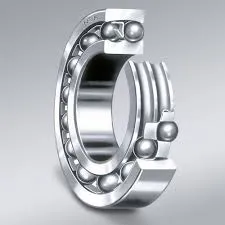
Nov . 19, 2024 21:49 Back to list
Needle Roller Thrust Bearing Dimensions and Specifications for Optimal Performance
Understanding Needle Roller Thrust Bearings A Size Chart Overview
Needle roller thrust bearings are a specialized type of bearing designed to accommodate axial loads. They incorporate long, thin cylindrical rollers (needles) that allow for high load-carrying capacities while taking up minimal space. These bearings are often used in applications where there is a need for high rigidity and minimal friction, making them essential components in various machinery and equipment.
The Importance of Size Charts
One of the critical considerations in selecting needle roller thrust bearings is the size. This decision directly affects performance, durability, and compatibility with other components in a machinery setup. Size charts serve as vital tools for engineers and technicians, providing information on various bearing dimensions, including inner diameter, outer diameter, width, and the number of rollers.
Key Dimensions in Needle Roller Thrust Bearings
1. Inner Diameter (ID) This measurement corresponds to the bore of the bearing, which fits over the shaft. Properly matching the inner diameter to the shaft size is crucial to ensure a snug fit and optimal performance.
2. Outer Diameter (OD) The outer diameter is the overall width of the bearing. This dimension must be compatible with the housing or support structure to facilitate stable support during operation.
3. Width (W) The width of the bearing indicates how much axial space it will occupy. Depending on the application, the thickness can help mitigate axial movement and accommodate varying load conditions.
5. Number of Rollers The number of needles in a bearing affects its load capacity and service life. More rollers can mean better load distribution, but they also require precise alignment to function optimally.
needle roller thrust bearing size chart

Reading the Size Chart
When referring to a needle roller thrust bearing size chart, one would typically encounter a grid or table listing various dimensions along with corresponding designations or part numbers. Each entry will provide the inner diameter, outer diameter, width, and possibly additional information such as load ratings and material specifications.
For instance, a size chart might look like this
- Part No. | Inner Dia (mm) | Outer Dia (mm) | Width (mm) | Load Rating (kN) - RKT 12 | 12 | 24 | 6 | 15 - RKT 15 | 15 | 30 | 8 | 20 - RKT 20 | 20 | 35 | 10 | 25
Such tables facilitate quick comparisons and enable manufacturers to select the appropriate bearing for their design requirements.
Applications of Needle Roller Thrust Bearings
The use of needle roller thrust bearings spans across numerous industries, including automotive, aerospace, and manufacturing. Common applications include gear drives, rotary tables, and hydraulic pumps, where they help minimize friction, manage high loads, and improve efficiency.
Conclusion
In conclusion, understanding needle roller thrust bearings and their associated size charts is crucial for engineers and technicians in ensuring that machinery operates smoothly and efficiently. By choosing the right dimensions and specifications, they can prevent mechanical failures, enhance performance, and ultimately extend the lifespan of equipment. Therefore, anyone involved in the design or maintenance of machinery should become familiar with the size charts and the essential criteria for selecting the appropriate needle roller thrust bearings for their applications.
Latest news
-
Grooved Ball Bearing Design and Functionality
NewsJun.04,2025
-
Concrete Mixer Bearing Load Capacity Testing
NewsJun.04,2025
-
6004 Bearing Dimensions in Robotic Joint Designs
NewsJun.04,2025
-
Advantages of Single-Row Deep Groove Ball Bearings
NewsJun.04,2025
-
Applications of Deep Groove Ball Bearings in Automotive Systems
NewsJun.04,2025
-
Innovations in Bearing Pressing Machine Design
NewsJun.04,2025
